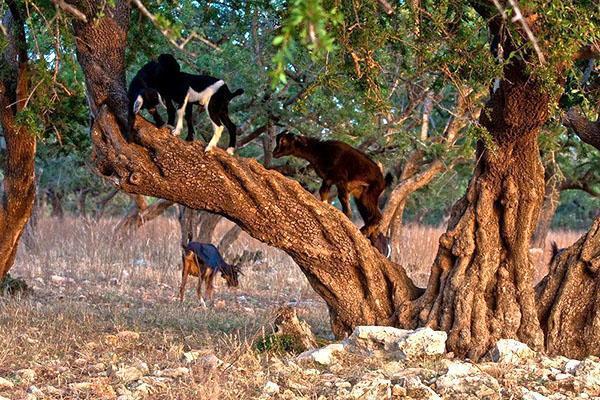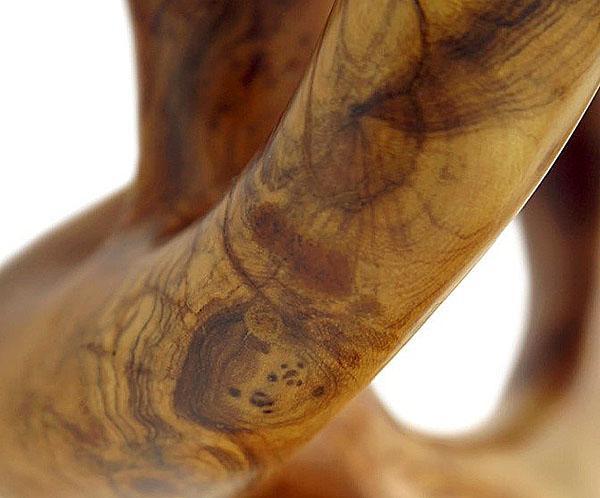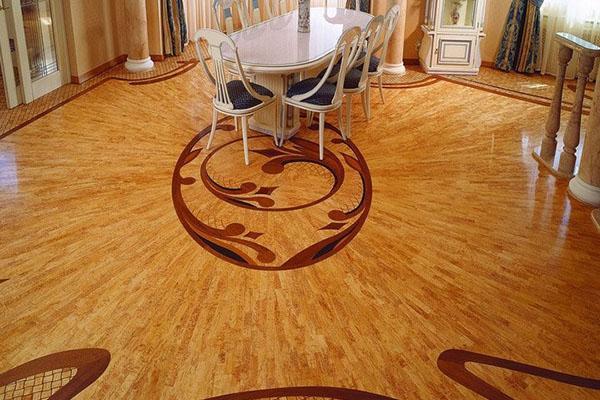An amazing introduction to the iron tree
 In nature, ironwood is extremely rare, therefore it occupies an honorable place in the Red Book. However, in its properties, each iron tree is not inferior to the density of cast iron. Its bark withstands gunfire, but it sinks hopelessly in water. It should be noted that this is not a separate class of trees, but a whole group, collected from different species. It includes several dozen species of plants with unusually dense wood. They can be found on every continent. Moreover, the raw materials are used both in the industrial industry and in medical practice.
In nature, ironwood is extremely rare, therefore it occupies an honorable place in the Red Book. However, in its properties, each iron tree is not inferior to the density of cast iron. Its bark withstands gunfire, but it sinks hopelessly in water. It should be noted that this is not a separate class of trees, but a whole group, collected from different species. It includes several dozen species of plants with unusually dense wood. They can be found on every continent. Moreover, the raw materials are used both in the industrial industry and in medical practice.
Read also the article: Sequoia
What is special about these trees?
 It is quite difficult to recognize the "stone" breed of a perennial plant with the naked eye. Especially if they are on the verge of extinction. Nevertheless, they are characterized by the following features:
It is quite difficult to recognize the "stone" breed of a perennial plant with the naked eye. Especially if they are on the verge of extinction. Nevertheless, they are characterized by the following features:
- the age of such centenarians is at least 2 hundred years;
- wood fiber is resistant to corrosive processes and does not deteriorate under the influence of strong acids;
- the bark contains many tannins that protect their "hosts" from all kinds of parasites, as well as from rot fungus;
- the log will definitely go under the water, since the density of wood is 1 t / m³, taking into account the moisture content of 12%, for this reason such species grow rather slowly;
- the height of each exceeds 25 meters, and the trunk girth reaches more than 200 cm.
 All these properties are necessary for iron wood to survive in the harshest climates. Sharp temperature changes in Russia, African drought or humid European climate will not be able to harm this natural phenomenon. Such tree species adapt perfectly in any unfavorable environment. To do this, they are equipped with a considerable number of devices, ranging from the unique structure of the trunk / roots and ending with the chemical composition of the bark. In this regard, they are widely used in production:
All these properties are necessary for iron wood to survive in the harshest climates. Sharp temperature changes in Russia, African drought or humid European climate will not be able to harm this natural phenomenon. Such tree species adapt perfectly in any unfavorable environment. To do this, they are equipped with a considerable number of devices, ranging from the unique structure of the trunk / roots and ending with the chemical composition of the bark. In this regard, they are widely used in production:
- furniture;

- building structures;
- cars;
- cosmetics;
- decor elements;

- underwater technology.
Extracts are obtained from the fruits, bark and leaves of these "stone" varieties, which are successfully used to treat:
- gout;
- diseases of the genitourinary system;
- terrible skin rashes;
- rheumatism.
 These ethers also did not pass by the cuisine of many nationalities. Until now, a small bottle of such oil costs fabulous money. To get a couple of grams of the most valuable elixir, you need to process several kilograms of raw materials. All this is done exclusively by hand. Having learned the main features of these varieties of the hardest trees, you can get to know some of them better.
These ethers also did not pass by the cuisine of many nationalities. Until now, a small bottle of such oil costs fabulous money. To get a couple of grams of the most valuable elixir, you need to process several kilograms of raw materials. All this is done exclusively by hand. Having learned the main features of these varieties of the hardest trees, you can get to know some of them better.
The branches of these plants were used in ancient times for feeding livestock. Moreover, for many Moroccan tribes, such durable wood served as fuel. The logs burned slowly and kept warm for a long time.
Birch Schmidt
 Russia can also boast of such a sight. Several dozen specimens of this "iron" birch can be found in the coastal regions of this country. The oldest of them is about 400 years old. Each such tree grows up to 30 meters in height. Meanwhile, the diameter of the trunk of this "beauty" is 80-90 cm. Distinctive features birch Schmidt serves:
Russia can also boast of such a sight. Several dozen specimens of this "iron" birch can be found in the coastal regions of this country. The oldest of them is about 400 years old. Each such tree grows up to 30 meters in height. Meanwhile, the diameter of the trunk of this "beauty" is 80-90 cm. Distinctive features birch Schmidt serves:
- Brownish gray bark with a creamy sheen. The surface of its mighty trunk is abundantly covered with deep cracks.In some places, peeling layers of bark or areas that begin to flake are visible.
- Perfectly smooth branches. They can be either black or brown, or the shade of overripe cherry. Onlookers are immediately struck by the resinous streaks on them. These lentils give off a pleasant aroma.

- The shape of the leaves resembles an oval, with one side having a pointed end.
An infusion / decoction of freshly harvested leaves or buds can be used as a choleretic agent, as well as for wound healing. It can be used to combat lichen, eczema, or acne.
 Such an exotic birch can be found in North Korea, on one of the islands of the Land of the Rising Sun, as well as in the Celestial Empire (China).
Such an exotic birch can be found in North Korea, on one of the islands of the Land of the Rising Sun, as well as in the Celestial Empire (China).
Argania prickly
 On the territory of modern Algeria and Morocco, according to the latest data, over 2 million specimens of such a perennial plant grow. This is all that remains of the mighty forests of argan alone. In her homeland, she is a symbol, as well as a source of life for nomadic African tribes. Various household items were made from its wood. The fruits and leaves were eaten by both animals and people. Wood material was enough for a long time, because the height of the trunk was from 10 m and more, and the circumference was more than 15 m.
On the territory of modern Algeria and Morocco, according to the latest data, over 2 million specimens of such a perennial plant grow. This is all that remains of the mighty forests of argan alone. In her homeland, she is a symbol, as well as a source of life for nomadic African tribes. Various household items were made from its wood. The fruits and leaves were eaten by both animals and people. Wood material was enough for a long time, because the height of the trunk was from 10 m and more, and the circumference was more than 15 m.
 Argania has a very powerful root system, capable of penetrating 30 meters deep into the soil. This protects the plant from dehydration and hurricane winds. Many inhabitants of Africa feed on its branches and leaves. But picking them off is not so easy, because they are covered with sharp thorns.
Argania has a very powerful root system, capable of penetrating 30 meters deep into the soil. This protects the plant from dehydration and hurricane winds. Many inhabitants of Africa feed on its branches and leaves. But picking them off is not so easy, because they are covered with sharp thorns.
West Africa (Republic of the Congo) also has a representative of the stone / iron tree group. People call her "Shi", but in the world of botanists she is known as "Amazing Vitellaria." But in the tropical latitudes of this continent, the majestic winged Lofira grows.

Temir-agach or Persian parrotia
 In terms of strength, this deciduous tree is unmatched. Its wood is several times harder than iron itself. In addition to Africa, parrotia can be found in the Middle East. The forests of Iran and Azerbaijan abound with these amazing specimens. Such trees look especially delightful in spring when they bloom.
In terms of strength, this deciduous tree is unmatched. Its wood is several times harder than iron itself. In addition to Africa, parrotia can be found in the Middle East. The forests of Iran and Azerbaijan abound with these amazing specimens. Such trees look especially delightful in spring when they bloom.  Although they prefer a warmer climate, they can still survive at -25 ° C. The barrel of a temir-agach is used for the production of:
Although they prefer a warmer climate, they can still survive at -25 ° C. The barrel of a temir-agach is used for the production of:
- parquet / floor boards;
- frames;
- automotive components;
- hatchet;
- artistic elements.
 Since such plants lack elasticity and flexibility, they are made into powerful "living" fences. Having grown and strengthened, they form an impenetrable thicket that protects the personal plot from intruders.
Since such plants lack elasticity and flexibility, they are made into powerful "living" fences. Having grown and strengthened, they form an impenetrable thicket that protects the personal plot from intruders.
Other group representatives
In addition to such popular species belonging to the "iron tree" group, there are many other "stone" plants. They grow on different continents and amaze with their strength, as well as unique healing properties. These include the following breeds:
- Yew. Wood is capable of retaining moisture, but it does not rot.

- A Christmas tree found in New Zealand. On this territory there are whole groves of such trees. They only throw out inflorescences at Christmas.

- Hmelegrab. The climate of the subtropical zone suits him, therefore the hop-hornbeam grows just above the equator. Sadly, only the fossilized remains of his wood were found in Russia.

- Mezuya. Asian peoples use the poisonous resin of this plant as a medicinal drug.

- Brazilwood. The endangered species grows in Brazil in the Amazonian jungle.

- Guaiacum. It grows on the islands located in the Caribbean. The resinous substances of this tree are used as stimulants.

As you can see, there are exceptions to the rules not only in linguistics, but also in nature. Such "iron" trees are an example of this. They have unusually strong wood that cannot stay in water.
Read also the article:breadfruit photo and description!